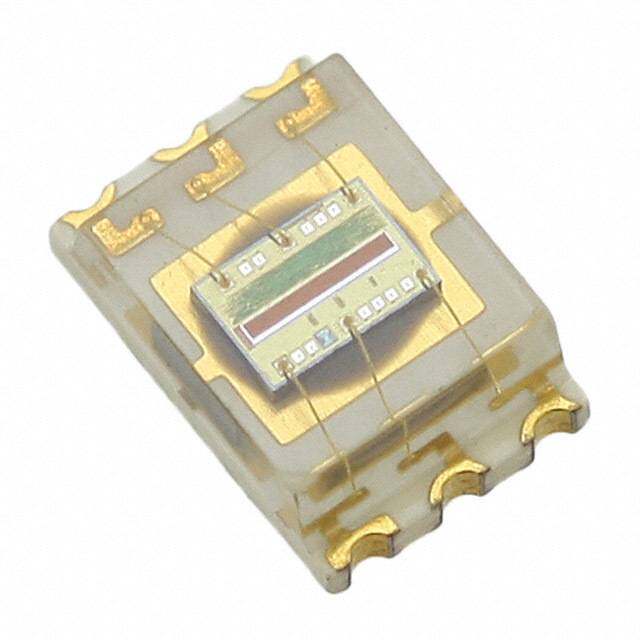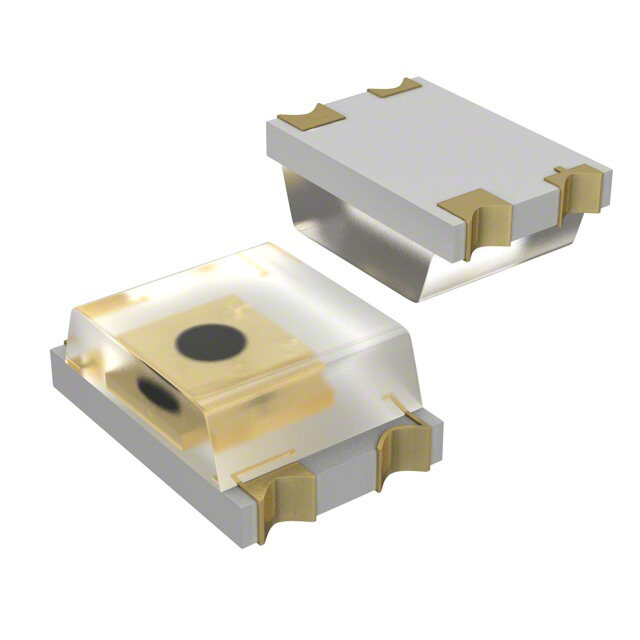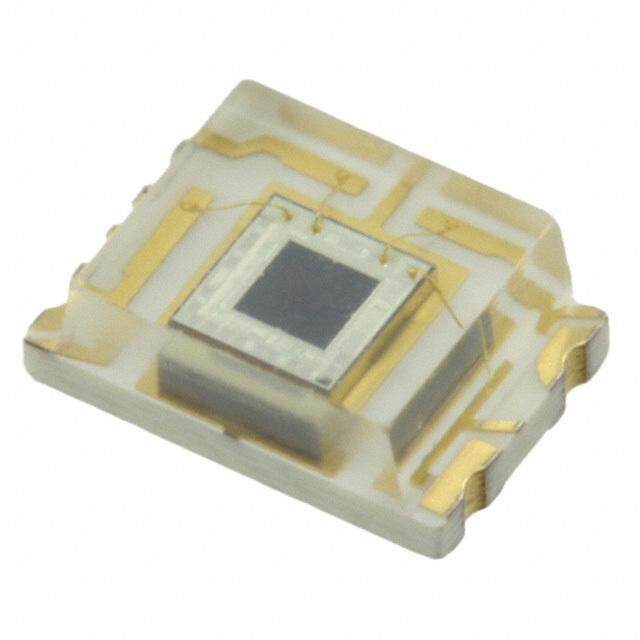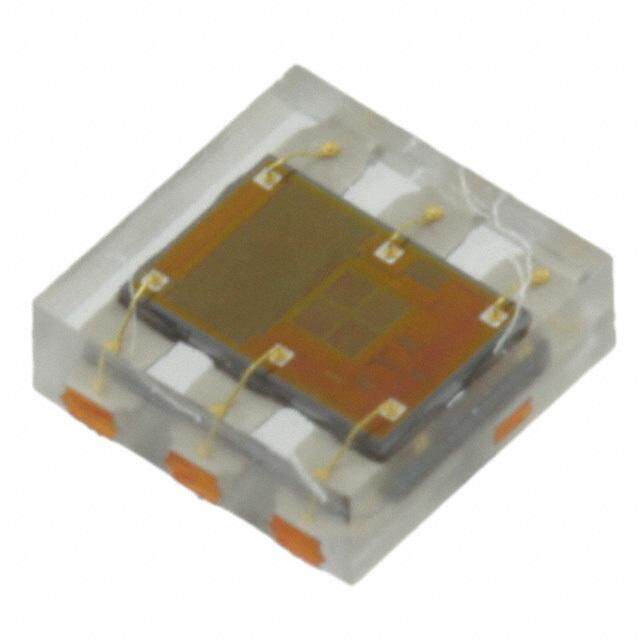ICGOO在线商城 > 传感器,变送器 > 光学传感器 - 环境光,IR,UV 传感器 > ISL29028AIROZ-T7
- 型号: ISL29028AIROZ-T7
- 制造商: Intersil
- 库位|库存: xxxx|xxxx
- 要求:
| 数量阶梯 | 香港交货 | 国内含税 |
| +xxxx | $xxxx | ¥xxxx |
查看当月历史价格
查看今年历史价格
ISL29028AIROZ-T7产品简介:
ICGOO电子元器件商城为您提供ISL29028AIROZ-T7由Intersil设计生产,在icgoo商城现货销售,并且可以通过原厂、代理商等渠道进行代购。 ISL29028AIROZ-T7价格参考。IntersilISL29028AIROZ-T7封装/规格:光学传感器 - 环境光,IR,UV 传感器, Optical Sensor Ambient I²C 8-VFDFN Exposed Pad。您可以下载ISL29028AIROZ-T7参考资料、Datasheet数据手册功能说明书,资料中有ISL29028AIROZ-T7 详细功能的应用电路图电压和使用方法及教程。
| 参数 | 数值 |
| 产品目录 | |
| 描述 | IC SENSOR LIGHT-PROXIMITY 8ODFN |
| 产品分类 | |
| 品牌 | Intersil |
| 数据手册 | |
| 产品图片 |
|
| 产品型号 | ISL29028AIROZ-T7 |
| rohs | 无铅 / 符合限制有害物质指令(RoHS)规范要求 |
| 产品系列 | - |
| 供应商器件封装 | 8-ODFN(2.1x2) |
| 其它名称 | ISL29028AIROZ-T7CT |
| 包装 | 剪切带 (CT) |
| 安装类型 | 表面贴装 |
| 封装/外壳 | 8-VFDFN 裸露焊盘 |
| 工作温度 | -40°C ~ 85°C |
| 带接近传感器 | 是 |
| 标准包装 | 1 |
| 波长 | - |
| 电压-电源 | 2.25 V ~ 3.63 V |
| 类型 | 环境 |
| 输出类型 | I²C |


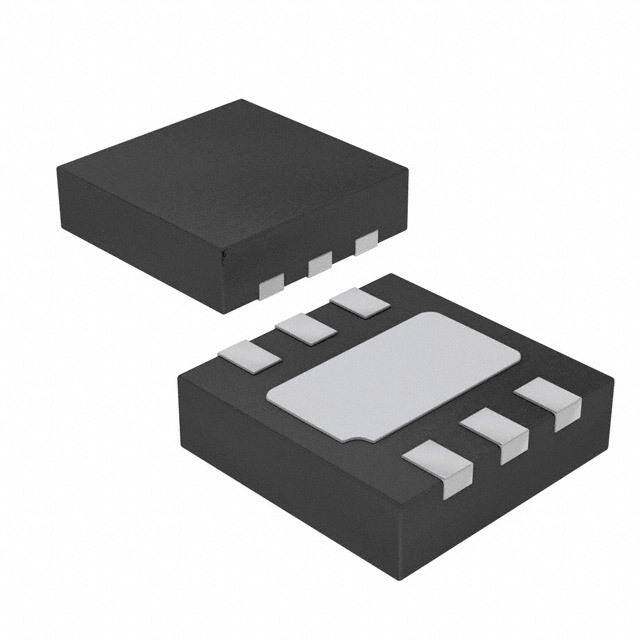
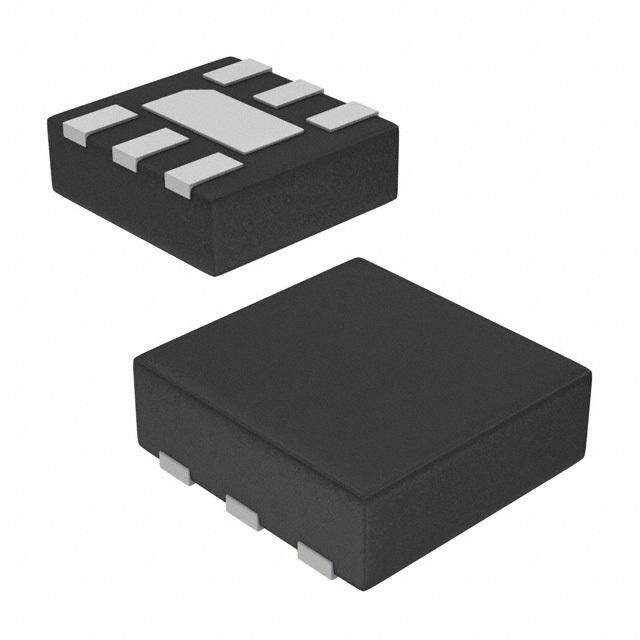

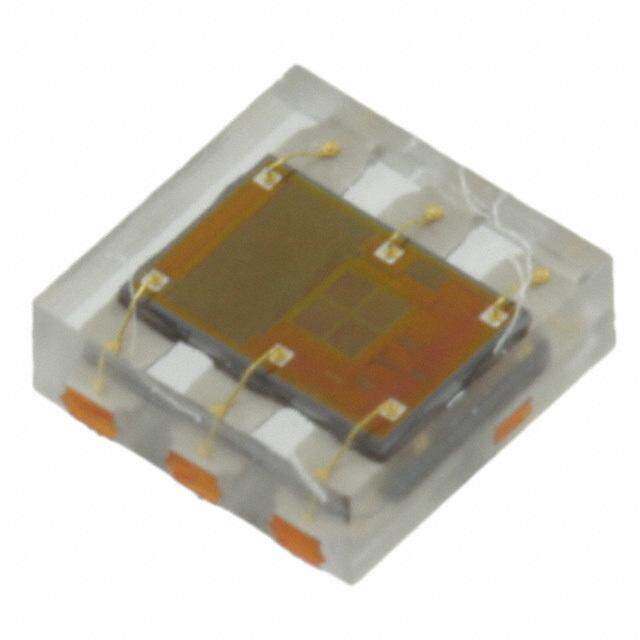

- 商务部:美国ITC正式对集成电路等产品启动337调查
- 曝三星4nm工艺存在良率问题 高通将骁龙8 Gen1或转产台积电
- 太阳诱电将投资9.5亿元在常州建新厂生产MLCC 预计2023年完工
- 英特尔发布欧洲新工厂建设计划 深化IDM 2.0 战略
- 台积电先进制程称霸业界 有大客户加持明年业绩稳了
- 达到5530亿美元!SIA预计今年全球半导体销售额将创下新高
- 英特尔拟将自动驾驶子公司Mobileye上市 估值或超500亿美元
- 三星加码芯片和SET,合并消费电子和移动部门,撤换高东真等 CEO
- 三星电子宣布重大人事变动 还合并消费电子和移动部门
- 海关总署:前11个月进口集成电路产品价值2.52万亿元 增长14.8%
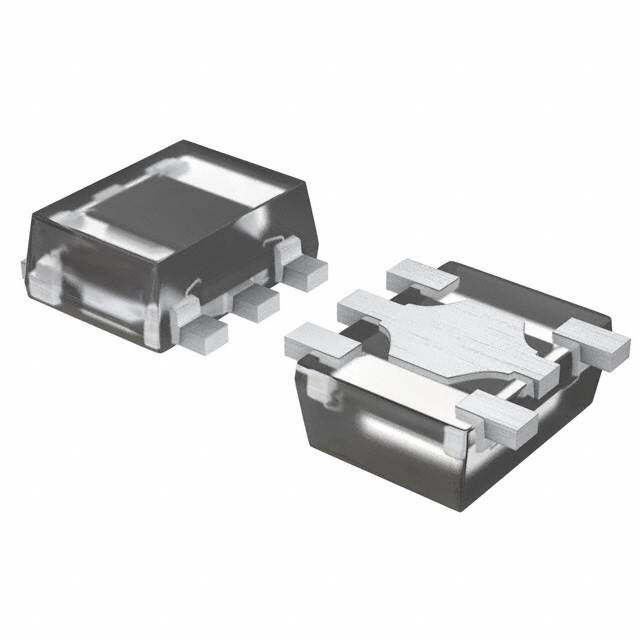
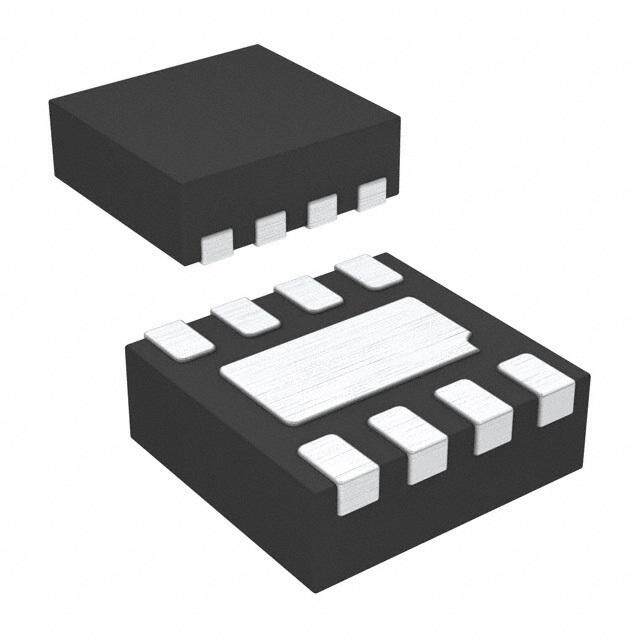
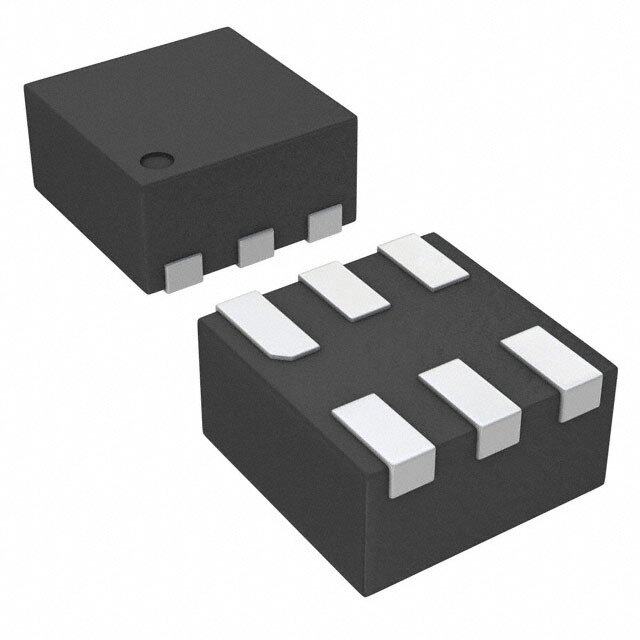
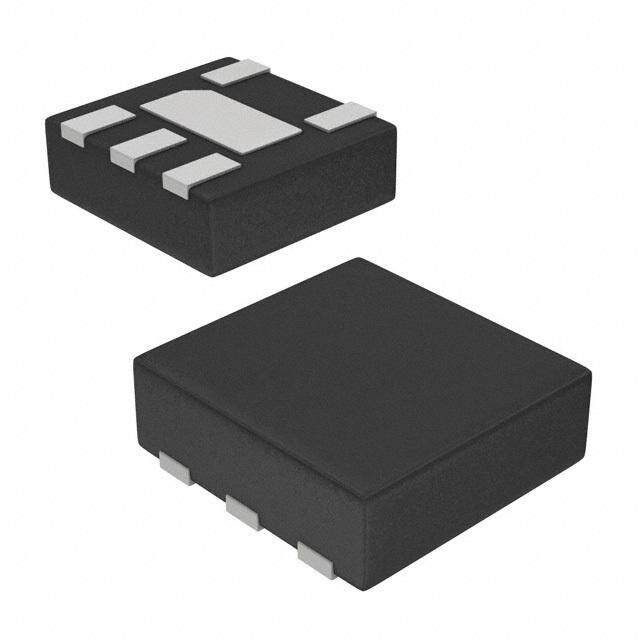
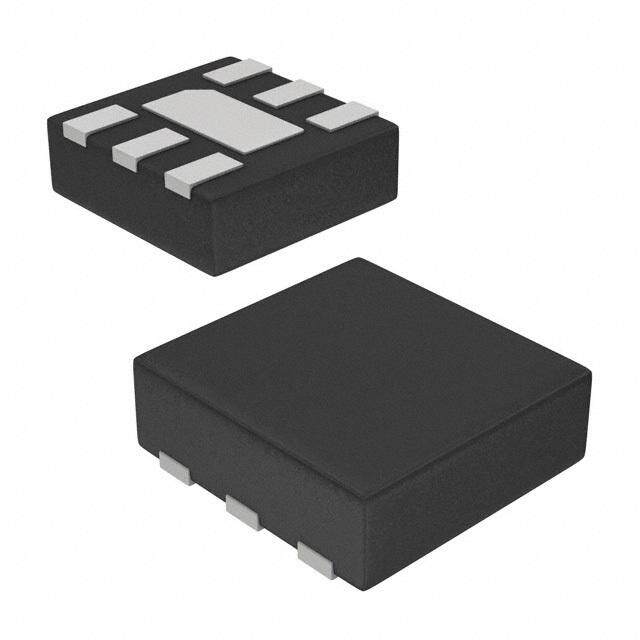
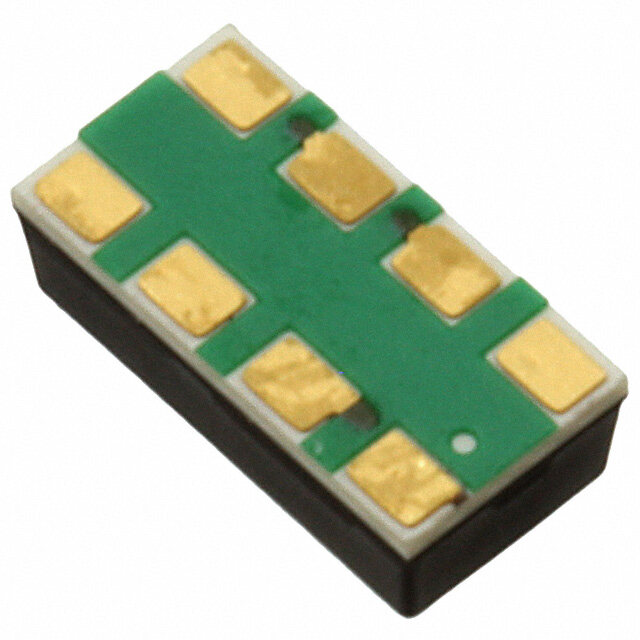
PDF Datasheet 数据手册内容提取
DATASHEET ISL29028A FN7721 Low Power Ambient Light and Proximity Sensor with Intelligent Interrupt and Rev 3.00 Sleep Modes January 29, 2014 The ISL29028A is an integrated ambient and infrared light-to- Features digital converter with a built-in IR LED driver and I2C Interface (SMBus Compatible). This device uses two independent ADCs • Works Under All Light Sources Including Sunlight for concurrently measuring ambient light and proximity in • Dual ADCs Measure ALS/Prox Concurrently parallel. The flexible interrupt scheme is designed for minimal • Intelligent Interrupt Scheme Simplifies μC Code microcontroller utilization. • 0.5% Typical Nonlinearity For ambient light sensor (ALS) data conversions, an ADC Ambient Light Sensing converts photodiode current (with a light sensitivity range up to 2000 Lux) in 100ms per sample. The ADC rejects 50Hz/60Hz • Simple Output Code Directly Proportional to lux flicker noise caused by artificial light sources. • 50Hz/60Hz Flicker Noise and IR Rejection • Light Sensor Close to Human Eye Response For proximity sensor (Prox) data conversions, the built-in driver turns on an external infrared LED and the proximity sensor • Selectable 125/2000 Lux Range ADC converts the reflected IR intensity to digital. This ADC Proximity Sensing rejects ambient IR noise (such as sunlight) and has a 540μs • Proximity Sensor with Broad IR Spectrum conversion time. - Can Use 850nm and 950nm External IR LEDs The ISL29028A provides low power operation of ALS and • IR LED Driver with I2C Programmable Sink Currents proximity sensing with a typical 138μA normal operation current - Net 100μs Pulse with 110mA or 220mA Amplitudes (110μA for sensors and internal circuitry, ~28μA for external LED) - Periodic Sleep Time up to 800ms Between Pulses with 220mA current pulses for a net 100μs, repeating every • Ambient IR Noise Cancellation (Including Sunlight) 800ms (or under). Intelligent and Flexible Interrupts The ISL29028A uses both a hardware pin and software bits to • Independent ALS/Prox Interrupt Thresholds indicate an interrupt event has occurred. An ALS interrupt is • Adjustable Interrupt Persistency defined as a measurement which is outside a set window. A - 1/4/8/16 Consecutive Triggers Required Before Interrupt proximity interrupt is defined as a measurement over a threshold limit. The user may also require that both ALS/prox Ultra Low Power interrupts occur at once, up to 16 times in a row before • 138μA DC Typical Supply Current for ALS/Prox Sensing activating the interrupt pin. - 110μA for Sensors and Internal Circuitry - 28μA Typical Current for External IR LED (Assuming The ISL29028A is designed to operate from 2.25V to 3.63V over 220mA for 100μs Every 800ms) the -40°C to +85°C ambient temperature range. It is packaged in a clear, lead-free 8lead ODFN package. • <1.0μA Supply Current When Powered Down Easy to Use Applications • Set Registers; Wait for Interrupt • Display and Keypad Dimming Adjustment and Proximity • I2C (SMBus Compatible) Output Sensing for: • Temperature Compensated - Mobile Devices: Smart Phone, PDA, GPS • Tiny ODFN8 2.0x2.1x0.7 (mm) Package - Computing Devices: Laptop PC, Netbook Additional Features - Consumer Devices: LCD-TV, Digital Picture Frame, Digital • 1.7V to 3.63V Supply for I2C Interface Camera • 2.25V to 3.63V Sensor Power Supply • Industrial and Medical Light and Proximity Sensing • Pb-Free (RoHS Compliant) • I2C Address Selection Pin FN7721 Rev 3.00 Page 1 of 16 January 29, 2014
ISL29028A Block Diagram VDD 2 ALS PHOTODIODE ARRAY COMMAND REGISTER LIGHT DATA DUAL CHANNEL PROCESS DATA ALS AND IR ADCs REGISTER 1 ADDR0 IR PHOTODIODE I2C 5 SCL ARRAY 6 SDA IREF INTERRUPT 7 INT FOSC IR DRIVER 8 IRDR 4 3 REXT GND Pin Configuration Pin Descriptions ISL29028A 8 LD ODFN (2.0MMX2.1MMX0.7MM) PIN PIN TOP VIEW NUMBER NAME DESCRIPTION ADDR0 1 8 IRDR 0 T.PAD Thermal Pad (connect to GND or float) 1 ADDR0 I2C address pin - pull high or low VDD 2 7 INT THERMAL (do not float) PAD GND 3 6 SDA 2 VDD Positive supply: 2.25V to 3.63V REXT 4 5 SCL 3 GND Ground 4 REXT External resistor (499k; 1%) connects this *THERMAL PAD CAN BE CONNECTED TO GND OR ELECTRICALLY ISOLATED pin to ground 5 SCL I2C clock line The I2C bus lines can be pulled 6 SDA I2C data line from 1.7V to above VDD, 3.63V max 7 INT Interrupt pin; Logic output (open-drain) for interrupt 8 IRDR IR LED driver pin - current flows into ISL29028A from LED cathode Ordering Information PACKAGE PART NUMBER TEMP. RANGE Tape & Reel PKG. (Notes 1, 2, 3) (°C) (Pb-free) DWG. # ISL29028AIROZ-T7 -40 to +85 8 Ld ODFN L8.2.1x2.0 NOTES: 1. Please refer to TB347 for details on reel specifications. 2. These Intersil Pb-free plastic packaged products employ special Pb-free material sets; molding compounds/die attach materials and NiPdAu plate - e4 termination finish, which is RoHS compliant and compatible with both SnPb and Pb-free soldering operations. Intersil Pb-free products are MSL classified at Pb-free peak reflow temperatures that meet or exceed the Pb-free requirements of IPC/JEDEC J STD-020. 3. For Moisture Sensitivity Level (MSL), please see device information page for ISL29028A. For more information on MSL, please see Technical Brief TB477. FN7721 Rev 3.00 Page 2 of 16 January 29, 2014
ISL29028A Absolute Maximum Ratings (TA = +25°C) Thermal Information VDD Supply Voltage between VDD and GND . . . . . . . . . . . . . . . . . . . . . .4.0V Thermal Resistance (Typical) JA (°C/W) JC (°C/W) I2C Bus Pin Voltage (SCL, SDA). . . . . . . . . . . . . . . . . . . . . . . . . -0.5V to 4.0V 8 Ld ODFN Package (Notes 4, 5) . . . . . . . . 88 10 I2C Bus Pin Current (SCL, SDA). . . . . . . . . . . . . . . . . . . . . . . . . . . . . . <10mA Maximum Die Temperature . . . . . . . . . . . . . . . . . . . . . . . . . . . . . . . . .+90°C REXT Pin Voltage. . . . . . . . . . . . . . . . . . . . . . . . . . . . . . . .-0.5V to VDD+0.5V Storage Temperature. . . . . . . . . . . . . . . . . . . . . . . . . . . . . .-40°C to +100°C IRDR Pin Voltage . . . . . . . . . . . . . . . . . . . . . . . . . . . . . . . . . . . . . . . . . . . .5.5V Operating Temperature . . . . . . . . . . . . . . . . . . . . . . . . . . . . .-40°C to +85°C ADDR0 Pin Voltage. . . . . . . . . . . . . . . . . . . . . . . . . . . . . .-0.5V to VDD+0.5V INT Pin Voltage . . . . . . . . . . . . . . . . . . . . . . . . . . . . . . . . . . . . . . -0.5V to 4.0V INT Pin Current . . . . . . . . . . . . . . . . . . . . . . . . . . . . . . . . . . . . . . . . . . . <10mA ESD Rating Human Body Model (Note 6). . . . . . . . . . . . . . . . . . . . . . . . . . . . . . . . . 2kV CAUTION: Do not operate at or near the maximum ratings listed for extended periods of time. Exposure to such conditions may adversely impact product reliability and result in failures not covered by warranty. NOTES: 4. JA is measured in free air with the component mounted on a high effective thermal conductivity test board with “direct attach” features. See Tech Brief TB379. 5. For JC, the “case temp” location is the center of the exposed metal pad on the package underside. 6. ESD on all pins is 2kV except for IRDR, which is 1.5kV. IMPORTANT NOTE: All parameters having Min/Max specifications are guaranteed. Typical values are for information purposes only. Unless otherwise noted, all tests are at the specified temperature and are pulsed tests, therefore: TJ = TC = TA Electrical Specifications VDD = 3.0V, TA = +25°C, REXT = 499k1% tolerance. MIN MAX PARAMETER DESCRIPTION CONDITION (Note 12) TYP (Note 12) UNIT VDD Power Supply Range 2.25 3.0 3.63 V SR_VDD Input Power-up Slew Rate VDD Rising Edge between 0.4V and 2.25V 0.5 V/ms IDD_OFF Supply Current when Powered Down ALS_EN = 0; PROX_EN = 0 0.1 0.8 µA IDD_NORM Supply Current for ALS+Prox in Sleep Time ALS_EN = 1; PROX_EN = 1 110 125 µA IDD_PRX_SLP Supply Current for Prox in Sleep Time ALS_EN = 0; PROX_EN = 1 80 µA IDD_ALS Supply Current for ALS ALS_EN = 1; PROX_EN = 0 96 µA fOSC Internal Oscillator Frequency 5.25 MHz tINTGR_ALS 12-bit ALS Integration/Conversion Time 88 100 112 ms tINTGR_PROX 8-bit Prox Integration/Conversion Time 0.54 ms Linearity ALS_1Nonlinearity EAMBIENT = 0, 53, 90 Lux; ALS_RANGE =0 -6 0.5 +6 % (Note 7) DATAALS_0 ALS Result when Dark EAMBIENT = 0 lux, 2k Range 1 3 Counts DATAALS_F Full Scale ALS ADC Code EAMBIENT > Selected Range Maximum Lux 4095 Counts (Note 11) ΔDATA Count Output Variation Over Three Light Sources: Ambient Light Sensing ±10 % DATA Fluorescent, Incandescent and Sunlight DATAALS_1 Light Count Output with LSB of 0.0326Lux/Count E = 53 lux, Fluorescent (Notes 8, 11), 1638 Counts ALS_RANGE = 0 DATAALS_2 Light Count Output With LSB of 0.522Lux/Count E = 320 lux, Fluorescent (Note 8), 460 614 768 Counts ALS_RANGE = 1 DATAPROX_0 Prox Measurement w/o Object in Path 1 2 Counts DATAPROX_F Full Scale Prox ADC Code 255 Counts DATAPROX_1 Prox Measurement Result (Note 9) 36 46 56 Counts tr Rise Time for IRDR Sink Current RLOAD = 15 at IRDR pin, 20% to 80% 500 ns tf Fall time for IRDR Sink Current RLOAD = 15 at IRDR pin, 80% to 20% 500 ns FN7721 Rev 3.00 Page 3 of 16 January 29, 2014
ISL29028A Electrical Specifications VDD = 3.0V, TA = +25°C, REXT = 499k1% tolerance. (Continued) MIN MAX PARAMETER DESCRIPTION CONDITION (Note 12) TYP (Note 12) UNIT IIRDR_0 IRDR Sink Current PROX_DR = 0; VIRDR = 0.5V 95 110 125 mA IIRDR_1 IRDR Sink Current PROX_DR = 1; VIRDR = 0.5V 220 mA IIRDR_LEAK IRDR Leakage Current PROX_EN = 0; VDD = 3.63V (Note 10) 0.001 1 µA VIRDR Acceptable Voltage Range on IRDR Pin Register bit PROX_DR = 0 0.5 4.3 V tPULSE Net IIRDR On Time Per PROX Reading 100 µs VREF Voltage of REXT Pin 0.51 V FI2C I2C Clock Rate Range 400 kHz VI2C Supply Voltage Range for I2C Interface 1.7 3.63 V VIL SCL and SDA Input Low Voltage 0.55 V VIH SCL and SDA Input High Voltage 1.25 V ISDA SDA Current Sinking Capability VOL = 0.4V 3 5 mA IINT INT Current Sinking Capability VOL = 0.4V 3 5 mA PSRRIRDR (IIRDR)/(VIRDR) PROX_DR = 0; VIRDR = 0.5V to 4.3V 4 mA/V NOTES: 7. Nonlinearity is defined as: [(Measured Counts at 53 lux)-(Expected Counts at 53 lux)]/4095. Expected counts are calculated using an endpoint linear- fit trendline from measurements at 0 lux and 90 lux. 8. An LED is used in production test. The LED irradiance is calibrated to produce the same DATA count against a fluorescent light source of the same lux level 9. An 850nm infrared LED is used to test PROX/IR sensitivity in an internal test mode. 10. Ability to guarantee IIRDR leakage of ~1nA is limited by test hardware. 11. For ALS applications under light-distorting glass, please see the section titled ALS Range 1 Considerations. 12. Compliance to datasheet limits is assured by one or more methods: production test, characterization and/or design. 2 I C Electrical Specifications For SCL and SDA unless otherwise noted, VDD = 3V, TA = +25°C, REXT = 499kΩ 1% tolerance (Note13). PARAMETER DESCRIPTION CONDITION MIN TYP MAX UNIT VI2C Supply Voltage Range for I2C Interface 1.7 3.63 V fSCL SCL Clock Frequency 400 kHz VIL SCL and SDA Input Low Voltage 0.55 V VIH SCL and SDA Input High Voltage 1.25 V Vhys Hysteresis of Schmitt Trigger Input 0.05VDD V VOL Low-level Output Voltage (Open-drain) at 4mA Sink 0.4 V Current Ii Input Leakage for each SDA, SCL pin -10 10 µA tSP Pulse Width of Spikes that must be Suppressed by 50 ns the Input Filter tAA SCL Falling Edge to SDA Output Data Valid 900 ns Ci Capacitance for each SDA and SCL pin 10 pF tHD:STA Hold Time (Repeated) START Condition After this period, the first clock pulse is 600 ns generated tLOW LOW Period of the SCL Clock Measured at the 30% of VDD crossing 1300 ns tHIGH HIGH period of the SCL Clock 600 ns tSU:STA Set-up Time for a Repeated START Condition 600 ns FN7721 Rev 3.00 Page 4 of 16 January 29, 2014
ISL29028A 2 I C Electrical Specifications For SCL and SDA unless otherwise noted, VDD = 3V, TA = +25°C, REXT = 499kΩ 1% tolerance (Note13). (Continued) PARAMETER DESCRIPTION CONDITION MIN TYP MAX UNIT tHD:DAT Data Hold Time 30 ns tSU:DAT Data Set-up Time 100 ns tR Rise Time of both SDA and SCL Signals (Note 14) 20 + 0.1xCb ns tF Fall Time of both SDA and SCL Signals (Note 14) 20 + 0.1xCb ns tSU:STO Set-up Time for STOP Condition 600 ns tBUF Bus Free Time Between a STOP and START 1300 ns Condition Cb Capacitive Load for Each Bus Line 400 pF Rpull-up SDA and SCL System Bus Pull-up Resistor Maximum is determined by tR and tF 1 k tVD;DAT Data Valid Time 0.9 µs tVD:ACK Data Valid Acknowledge Time 0.9 µs VnL Noise Margin at the LOW Level 0.1VDD V VnH Noise Margin at the HIGH Level 0.2VDD V NOTES: 13. All parameters in I2C Electrical Specifications table are guaranteed by design and simulation. 14. Cb is the capacitance of the bus in pF. FIGURE 1. I2C TIMING DIAGRAM FN7721 Rev 3.00 Page 5 of 16 January 29, 2014
ISL29028A Register Map There are ten 8-bit registers accessible via I2C. Registers 0x1 and 0x2 define the operation mode of the device. Registers 0x3 through 0x7 store the various ALS/IR/Prox thresholds which trigger interrupt events. Registers 0x8 through 0xA store the results of ALS/IR/Prox ADC conversions. TABLE 1. ISL29028A REGISTERS AND REGISTER BITS BIT ADDR REG NAME 7 6 5 4 3 2 1 0 DEFAULT 0x00 (n/a) (Reserved) (n/a) 0x01 CONFIGURE PROX EN PROX_SLP[2:0] PROX_DR ALS_EN ALS_RANGE ALSIR_MODE 0x00 0x02 INTERRUPT PROX_FLAG PROX_PRST[1:0] (Write 0) ALS_FLAG ALS_PRST[1:0] INT_CTRL 0x00 0x03 PROX_LT PROX_LT[7:0] 0x00 0x04 PROX_HT PROX_HT[7:0] 0xFF 0x05 ALSIR_TH1 ALSIR_LT[7:0] 0x00 0x06 ALSIR_TH2 ALSIR_HT[3:0] ALSIR_LT[11:8] 0xF0 0x07 ALSIR_TH3 ALSIR_HT[11:4] 0xFF 0x08 PROX_DATA PROX_DATA[7:0] 0x00 0x09 ALSIR_DT1 ALSIR_DATA[7:0] 0x00 0x0A ALSIR_DT2 (Unused) ALSIR_DATA[11:8] 0x00 0x0E TEST1 (Write as 0x00) 0x00 0x0F TEST2 (Write as 0x00) 0x00 Register Descriptions TABLE 2. REGISTER 0x00 (RESERVED) BIT # ACCESS DEFAULT NAME FUNCTION/OPERATION 7:0 (n/a) (n/a) (n/a) Reserved - no need to read or write TABLE 3. REGISTER 0x01 (CONFIGURE) - PROX/ALS CONFIGURATION BIT # ACCESS DEFAULT NAME FUNCTION/OPERATION When = 0, proximity sensing is disabled PROX_EN 7 RW 0x00 When = 1, continuous proximity sensing is enabled. Prox data will be ready 0.54ms after this (Prox Enable) bit is set high For bits 6:4 = (see the following) 111; sleep time between prox IR LED pulses is 0.0ms (run continuously) 110; sleep time between prox IR LED pulses is 12.5ms 101; sleep time between prox IR LED pulses is 50ms PROX_SLP 6:4 RW 0x00 100; sleep time between prox IR LED pulses is 75ms (Prox Sleep) 011; sleep time between prox IR LED pulses is 100ms 010; sleep time between prox IR LED pulses is 200ms 001; sleep time between prox IR LED pulses is 400ms 000; sleep time between prox IR LED pulses is 800ms PROX_DR When = 0, IRDR behaves as a pulsed 110mA current sink 3 RW 0x00 (Prox Drive) When = 1, IRDR behaves as a pulsed 220mA current sink ALS_EN When = 0, ALS/IR sensing is disabled 2 RW 0x00 (ALS Enable) When = 1, continuous ALS/IR sensing is enabled with new data ready every 100ms ALS_RANGE When = 0, ALS is in low-lux range 1 RW 0x00 (ALS Range) When = 1, ALS is in high-lux range ALSIR_MODE When = 0, ALS/IR data register contains visible ALS sensing data 0 RW 0x00 (ALSIR Mode) When = 1, ALS/IR data register contains IR spectrum sensing data FN7721 Rev 3.00 Page 6 of 16 January 29, 2014
ISL29028A TABLE 4. REGISTER 0x02 (INTERRUPT) - PROX/ALS INTERRUPT CONTROL BIT # ACCESS DEFAULT BIT NAME FUNCTION/OPERATION PROX_FLAG When = 0, no Prox interrupt event has occurred since power-on or last “clear” 7 FLAG 0x00 (Prox Flag) When = 1, a Prox interrupt event occurred. Clearable by writing “0” For bits 6:5 = (see the following) 00; set PROX_FLAG if 1 conversion result trips the threshold value PROX_PRST 6:5 RW 0x00 01; set PROX_FLAG if 4 conversion results trip the threshold value (Prox Persist) 10; set PROX_FLAG if 8 conversion results trip the threshold value 11; set PROX_FLAG if 16 conversion results trip the threshold value Unused Unused register bit - write 0 4 RW 0x00 (Write 0) ALS_FLAG When = 0, no ALS interrupt event has occurred since power-on or last “clear” 3 FLAG 0x00 (ALS FLAG) When = 1, an ALS interrupt event occurred. Clearable by writing “0” For bits 2:1 = (see the following) 00; set ALS_FLAG if 1 conversion is outside the set window ALS_PRST 2:1 RW 0x00 01; set ALS_FLAG if 4 conversions are outside the set window (ALS Persist) 10; set ALS_FLAG if 8 conversions are outside the set window 11; set ALS_FLAG if 16 conversions are outside the set window INT_CTRL When = 0, set INT pin low if PROX_FLAG or ALS_FLAG high (logical OR) 0 RW 0x00 (Interrupt Control) When = 1, set INT pin low if PROX_FLAG and ALS_FLAG high (logical AND) TABLE 5. REGISTER 0x03 (PROX_LT) - INTERRUPT LOW THRESHOLD FOR PROXIMITY SENSOR BIT # ACCESS DEFAULT BIT NAME FUNCTION/OPERATION PROX_LT 8-bit interrupt low threshold for 7:0 RW 0x00 (Prox Threshold) proximity sensing TABLE 6. REGISTER 0x04 (PROX_HT) - INTERRUPT HIGH THRESHOLD FOR PROXIMITY SENSOR BIT # ACCESS DEFAULT BIT NAME FUNCTION/OPERATION PROX_HT 7:0 RW 0xFF 8-bit interrupt high threshold for proximity sensing (Prox Threshold) TABLE 7. REGISTER 0x05 (ALSIR_TH1) - INTERRUPT LOW THRESHOLD FOR ALS/IR BIT # ACCESS DEFAULT BIT NAME FUNCTION/OPERATION ALSIR_LT[7:0] 7:0 RW 0x00 Lower 8 bits (of 12 bits) for ALS/IR low interrupt threshold (ALS/IR Low Thr.) TABLE 8. REGISTER 0x06 (ALSIR_TH2) - INTERRUPT LOW/HIGH THRESHOLDS FOR ALS/IR BIT # ACCESS DEFAULT BIT NAME FUNCTION/OPERATION ALSIR_HT[3:0] 7:4 RW 0x0F Lower 4 bits (of 12 bits) for ALS/IR high interrupt threshold (ALS/IR High Thr.) ALSIR_LT[11:8] 3:0 RW 0x00 Upper 4 bits (of 12 bits) for ALS/IR low interrupt threshold (ALS/IR Low Thr.) TABLE 9. REGISTER 0x07 (ALSIR_TH3) - INTERRUPT HIGH THRESHOLD FOR ALS/IR BIT # ACCESS DEFAULT BIT NAME FUNCTION/OPERATION ALSIR_HT[11:4] 7:0 RW 0xFF Upper 8 bits (of 12 bits) for ALS/IR high interrupt threshold (ALS/IR High Thr.) TABLE 10. REGISTER 0x08 (PROX_DATA) - PROXIMITY SENSOR DATA BIT # ACCESS DEFAULT BIT NAME FUNCTION/OPERATION PROX_DATA 7:0 RO 0x00 Results of 8-bit proximity sensor ADC conversion (Proximity Data) FN7721 Rev 3.00 Page 7 of 16 January 29, 2014
ISL29028A TABLE 11. REGISTER 0x09 (ALSIR_DT1) - ALS/IR SENSOR DATA (LOWER 8 BITS) BIT # ACCESS DEFAULT BIT NAME FUNCTION/OPERATION ALSIR_DATA 7:0 RO 0x00 Lower 8 bits (of 12 bits) from result of ALS/IR sensor conversion (ALS/IR Data) TABLE 12. REGISTER 0x0A (ALSIR_DT2) - ALS/IR SENSOR DATA (UPPER 4 BITS) BIT # ACCESS DEFAULT BIT NAME FUNCTION/OPERATION 7:4 RO 0x00 (Unused) Unused bits ALSIR_DATA 3:0 RO 0x00 Upper 4 bits (of 12 bits) from result of ALS/IR sensor conversion (ALS/IR Data) TABLE 13. REGISTER 0x0E (TEST1) - TEST MODE BIT # ACCESS DEFAULT BIT NAME FUNCTION/OPERATION 7:0 RW 0x00 (Write as 0x00) Test mode register. When 0x00, in normal operation TABLE 14. REGISTER 0x0F (TEST2) - TEST MODE 2 BIT # ACCESS DEFAULT BIT NAME FUNCTION/OPERATION 7:0 RW 0x00 (Write as 0x00) Test mode register. When 0x00, in normal operation I2C DATA START DEVICE ADDRESS W A REGISTER ADDRESS STOPSTART DEVICE ADDRESS A DATA BYTE0 I2C SDA A6 A5 A4 A3 A2 A1 A0 W A R7 R6 R5 R4 R3 R2 R1 R0 A A6 A5 A4 A3 A2 A1 A0 W A SDA DRIVEN BY ISL29028A MASTER I2C SDA SLAVE(ISL29028A) SDA DRIVEN BY MASTER A SDA DRIVEN BY MASTER A SDA DRIVEN BY MASTER A D7 D6 D5 D4 D3 D2 D1 D0 I2C CLK 1 2 3 4 5 6 7 8 9 1 2 3 4 5 6 7 8 9 1 2 3 4 5 6 7 8 9 1 2 3 4 5 6 7 8 9 FIGURE 2. I2C DRIVER TIMING DIAGRAM FOR MASTER AND SLAVE CONNECTED TO COMMON BUS Principles of Operation Photodiodes and ADCs 2 I C Interface The ISL29028A contains two photodiode arrays which convert photons (light) into current. The ALS photodiodes are constructed to The ISL29028A’s I2C interface slave address is internally hardwired mimic the human eye’s wavelength response curve to visible light as 0b100010<x>, where “0b” signifies binary notation and x (see Figure 6). The ALS photodiodes’ current output is digitized by a represents the logic level on pin ADDR0. 12-bit ADC in 100ms. These 12 bits can be accessed by reading Figure 2 shows a sample one-byte read. The I2C bus master from I2C registers 0x9 and 0xA when the ADC conversion is always drives the SCL (clock) line, while either the master or the completed. slave can drive the SDA (data) line. Every I2C transaction begins The ALS converter is a charge-balancing integrating 12-bit ADC. with the master asserting a start condition (SDA falling while SCL Charge-balancing is best for converting small current signals in the remains high). The first transmitted byte is initiated by the presence of periodic AC noise. Integrating over 100ms highly rejects master and includes 7 address bits and a R/W bit. The slave is both 50Hz and 60Hz light flicker by picking the lowest integer responsible for pulling SDA low during the ACK bit after every number of cycles for both 50Hz/60Hz frequencies. transmitted byte. Each I2C transaction ends with the master asserting a stop condition (SDA rising while SCL remains high). For more information about the I2C standard, please consult the Philips™ I2C specification documents. FN7721 Rev 3.00 Page 8 of 16 January 29, 2014
ISL29028A ALS CONVERSION TIME = SEVERAL µs BETWEEN 100ms (FIXED) CONVERSIONS ALS ACTIVE 100ms 100ms 100ms 100ms 100ms TIME 0.54ms FOR PROX CONVERSION PROX SENSOR ACTIVE TIME SERIES OF IRDR CURRENT PULSES (CURRENT TOTALING 0.1ms DRIVER) TIME SLEEP TIME (PROX_SLP) FIGURE 3. TIMING DIAGRAM FOR PROX/ALS EVENTS - NOT TO SCALE The proximity sensor is an 8-bit ADC which operates in a similar fashion. When proximity sensing is enabled, the IRDR pin will 220mA (PROX_DR = 1) drive a user-supplied infrared LED, the emitted IR reflects off an object (i.e., a human head) back into the ISL29028A, and a sensor converts the reflected IR wave to a current signal in 0.54ms. The 110mA ADC subtracts the IR reading before and after the LED is driven (PROX_DR = 0) PIN 8 - IRDR (to remove ambient IR such as sunlight), and converts this value to a digital count stored in Register0x8. The ISL29028A is designed to run two conversions concurrently: a (IRDR IS HI-Z WHEN NOT DRIVING) proximity conversion and an ALS (or IR) conversion. Please note that because of the conversion times, the user must let the ADCs perform FIGURE 4. CURRENT DRIVE MODE OPTIONS one full conversion first before reading from I2C Registers PROX_DATA (wait 0.54ms) or ALSIR_DT1/2 (wait 100ms). The timing When the IR from the LED reaches an object and gets reflected between ALS and Prox conversions is arbitrary (as shown in Figure 3). back into the ISL29028A, the reflected IR light is converted into The ALS runs continuously with new data available every 100ms. The current as per the IR spectral response shown in Figure 7. One proximity sensor runs continuously with a time between conversions entire proximity measurement takes 0.54ms for one conversion decided by PROX_SLP (Register 1 Bits [6:4]). (which includes 0.1ms spent driving the LED), and the period between proximity measurements is decided by PROX_SLP Ambient Light and IR Sensing (sleep time) in Register 1 Bits 6:4. The ISL29028A is set for ambient light sensing when Register bit Average LED driving current consumption is given by Equation 1. ALSIR_MODE = 0 and ALR_EN = 1. The light-wavelength response of I 100s the ALS appears as shown in Figure 6. ALS measuring mode (as I = --l--R----D----R---;--P---E----A---K-------------------------- (EQ. 1) lRDR;AVE T +540s opposed to IR measuring mode) is set by default. SLEEP When the part is programmed for infrared (IR) sensing A typical IRDR scheme is 220mA amplitude pulses every 800ms, (ALSIR_MODE = 1; ALS_EN = 1), infrared light is converted into a which yields 28μA DC. current and digitized by the same ALS ADC. The result of an IR Total Current Consumption conversion is strongly related to the amount of IR energy incident on our sensor, but is unitless and is referred to in digital counts. Total current consumption is the sum of IDD and IIRDR. The IRDR pin sinks current (as shown in Figure 4) and the average IRDR Proximity Sensing current can be calculated using Equation 1. IDD depends on When proximity sensing is enabled (PROX_EN = 1), the external voltage and the mode-of-operation as seen in Figure 11. IR LED is driven for 0.1ms by the built-in IR LED driver through Interrupt Function the IRDR pin. The amplitude of the IR LED current depends on Register 1 bit 3: PROX_DR. If this bit is low, the load will see a The ISL29028A has an intelligent interrupt scheme designed to fixed 110mA current pulse. If this bit is high, the load on IRDR shift some logic processing away from intensive microcontroller will see a fixed 220mA current pulse as seen in Figure 4. I2C polling routines (which consume power) and towards a more independent light sensor which can instruct a system to “wake up” or “go to sleep”. FN7721 Rev 3.00 Page 9 of 16 January 29, 2014
ISL29028A An ALS interrupt event (ALS_FLAG) is governed by Registers 5 Power-Down through7. The user writes a high and low threshold value to these To put the ISL29028A into a power-down state, the user can set both registers and the ISL29028A will issue an ALS interrupt flag if the PROX_EN and ALS_EN bits to 0 in Register1. Or more simply, set all actual count stored in Registers 0x9 and 0xA are outside the user’s of Register 1 to 0x00. programmed window. The user must write 0 to clear the ALS_FLAG. Calculating Lux A proximity interrupt event (PROX_FLAG) is governed by the high and low thresholds in registers 3 and 4 (PROX_LT and PROX_HT). The ISL29028A’s ADC output codes are directly proportional to lux PROX_FLAG is set when the measured proximity data is more when in ALS mode (see ALSIR_MODE bit). than the higher threshold X-times-in-a-row (X is set by user; see next paragraph). The proximity interrupt flag is cleared when the Ecalc = RANGEOUTADC (EQ. 2) prox data is lower than the low proximity threshold X-times-in-a-row, or when the user writes “0” to PROX_FLAG. In Equation 2, Ecalc is the calculated lux reading and OUT represents the ADC code. The constant to plug in is determined Interrupt persistency is another useful option available for both by the range bit ALS_RANGE (register 0x1 bit 1) and is ALS and proximity measurements. Persistency requires X-in-a- independent of the light source type. row interrupt flags before the INT pin is driven low. Both ALS and TABLE 15. ALS SENSITIVITY AT DIFFERENT RANGES Prox have their own independent interrupt persistency options. See ALS_PRST and PROX_PRST bits in Register 2. αRANGE ALS_RANGE (Lux/Count) The final interrupt option is the ability to AND or OR the two interrupt flags using Register 2 Bit 0 (INT_CTRL). If the user 0 0.0326 wants both ALS/Prox interrupts to happen at the same time 1 0.522 before changing the state of the interrupt pin, set this bit high. If the user wants the interrupt pin to change state when either the Table 15 shows two different scale factors: one for the low range ALS or the Proximity interrupt flag goes high, leave this bit to its (ALS_RANGE = 0) and the other for the high range default of 0. (ALS_RANGE = 1). ALS Range 1 Considerations Noise Rejection When measuring ALS counts higher than 1800 on range 1 Charge balancing ADC’s have excellent noise-rejection (ALSIR_MODE=0, ALS_RANGE=0, ALS_DATA > 1800), switch characteristics for periodic noise sources whose frequency is an to range 2 (change the ALS_RANGE bit from “0” to “1”) and integer multiple of the conversion rate. For instance, a 60Hz AC remeasure ALS counts. This recommendation pertains only to unwanted signal’s sum from 0ms to k*16.66ms (k = 1,2...ki) is zero. applications where the light incident upon the sensor is IR-heavy Similarly, setting the device’s integration time to be an integer and is distorted by tinted glass that increases the ratio of infrared multiple of the periodic noise signal greatly improves the light to visible light. For more information, contact the factory. sensor output signal in the presence of noise. Since wall sockets V Power-up and Power Supply may output at 60Hz or 50Hz, our integration time is 100ms: the DD lowest common integer number of cycles for both frequencies. Considerations Proximity Detection of Various Objects Upon power-up, please ensure a VDD slew rate of 0.5V/ms or greater. After power-up, or if the user’s power supply temporarily deviates Proximity sensing relies on the amount of IR reflected back from from our specification (2.25V to 3.63V), Intersil recommends the objects. A perfectly black object would absorb all light and reflect user write the following: write 0x00 to register 0x01, write 0x29 to no photons. The ISL29028A is sensitive enough to detect black register 0x0F, write 0x00 to register 0x0E, and write 0x00 to register ESD foam which reflects only 1% of IR. For biological objects, 0x0F. The user should then wait ~1ms or more and then rewrite all blonde hair reflects more than brown hair and customers may registers to the desired values. If the user prefers a hardware reset notice that skin tissue is much more reflective than hair. IR method instead of writing to test registers: set VDD=0V for 1 second penetrates into the skin and is reflected or scattered back from or more, power back up at the required slew rate, and write registers within. As a result, the proximity count peaks at contact and to the desired values. monotonically decreases as skin moves away. The reflective characteristics of skin are very different from that of paper. FN7721 Rev 3.00 Page 10 of 16 January 29, 2014
ISL29028A Typical Circuit Suggested PCB Footprint A typical application for the ISL29028A is shown in Figure5. The It is important that users check the “Surface Mount Assembly ISL29028A’s I2C address is internally hardwired as Guidelines for Optical Dual FlatPack No Lead (ODFN) Package” 0b100010<x>, with x representing the logic state of input I2C before starting ODFN product board mounting. address pin ADDR0. The device can be tied onto a system’s I2C (http://www.intersil.com/data/tb/TB477.pdf) bus together with other I2C compliant devices. Layout Considerations Soldering Considerations Convection heating is recommended for reflow soldering; direct- The ISL29028A is relatively insensitive to layout. Like other I2C infrared heating is not recommended. The plastic ODFN package devices, it is intended to provide excellent performance even in does not require a custom reflow soldering profile, and is qualified to significantly noisy environments. There are only a few +260°C. A standard reflow soldering profile with a +260°C considerations that will ensure best performance. maximum is recommended. Route the supply and I2C traces as far as possible from all sources of noise. A 0.1µF and 1µF power supply decoupling capacitors need to be placed close to the device. ALS Sensor Window Layout Special care should be taken to ensure that the sensor, as outlined in the sensor location outline, is uniformly illuminated. Shadows that result from off angle window openings that affect that uniform illumination can affect the measurement results. VI2C_PULL-UP R1 R2 R3 I2C MASTER 10kΩ 10kΩ 10kΩ MICROCONTROLLER INT SDA VDD SCL VIR-LED SLAVE_0 SLAVE_1 I2C SLAVE_n 1 8 ADDR0 IRDR SDA SDA 2 VDD INT 7 SCL SCL C1 C2 1µF 0.1µF 3 6 GND SDA 4 5 REXT SCL REXT ISL29028A 499kΩ FIGURE 5. ISL29028A TYPICAL CIRCUIT FN7721 Rev 3.00 Page 11 of 16 January 29, 2014
ISL29028A Typical Performance Curves VDD = 3.0V, REXT = 499k 1.0 1.0 HUMAN EYE 0.9 FLUORESCENT 0.9 IR/PROX NSITY 00..78 ONSE 00..78 ALS E P NT 0.6 ES 0.6 D I 0.5 HALOGEN INCAND. D R 0.5 ALIZE 0.4 SUN ALIZE 0.4 M 0.3 M 0.3 R R NO 0.2 NO 0.2 0.1 0.1 0 0.0 350 550 750 950 300 400 500 600 700 800 900 1000 1100 WAVELENGTH (nm) WAVELENGTH (nm) FIGURE 6. SPECTRUM OF FOUR LIGHT SOURCES NORMALIZED FIGURE 7. ISL29028A SENSITIVITY TO DIFFERENT BY LUMINOUS INTENSITY (LUX) WAVELENGTHS 1.0 2500 0.9 HALOGEN TIVITY 00..78 G (LX) 2000 SI N EN 0.6 ADI 1500 S E D 0.5 R FLUORESCENT E R LIZ 0.4 TE 1000 INCANDESCENT A E M 0.3 M R X O 0.2 U 500 N L 0.1 0 0 -90 -60 -30 0 30 60 90 0 1000 2000 3000 4000 5000 ANGULAR OFFSET (°) ALS CODE (12-BIT) FIGURE 8. ANGULAR SENSITIVITY FIGURE 9. ALS LINEARITY OVER 3 LIGHT SOURCES (2000 LUX RANGE) 300 160 ALS+PROX (DURING PROX SLEEP) 18% GREY CARD 250 140 COUNTS (8-BIT) 112050000 220mA11 M0mWODAHE IMTEO DCEOPY PAPER ASURED I (µA)DD 11028000 ALS-ONLY X E O M R P 50 60 PROX (DURING PROX SLEEP) 0 40 0 20 40 60 80 100 120 140 160 180 200 2.25 2.40 2.55 2.70 2.85 3.00 3.15 3.30 3.45 3.60 DISTANCE (mm) INPUT VDD (V) FIGURE 10. PROX COUNTS vs DISTANCE WITH 10CM x 10CM FIGURE 11. VDD vs IDD FOR VARIOUS MODES OF OPERATION REFLECTOR (USING ISL29028 EVALUATION BOARD) FN7721 Rev 3.00 Page 12 of 16 January 29, 2014
ISL29028A Typical Performance Curves VDD = 3.0V, REXT = 499k (Continued) 50 240 220mA-MODE (PROX_DR = 1) 40 220 OM %) 30 I (mA)IRDR 112680000 T CHANGE FRASUREMENT ( -1210000 NE UM 112400 LS CO+25°C --3200 110mA-MODE (PROX_DR = 0) A -40 100 0 0.5 1.0 1.5 2.0 2.5 3.0 3.5 4.0 4.5 5.0 -50 -40 -15 10 35 60 85 VIRDR (V) TEMPERATURE (°C) FIGURE 12. IRDR PULSE AMPLITUDE vs VIRDR FIGURE 13. STABILITY OF ALS COUNT OVER TEMP (AT 300 LUX) 10 9 8 T) 7 BI 2- 6 1 E ( 5 D O C 4 S L 3 A 2 1 0 -40 10 60 TEMPERATURE (°C) FIGURE 14. STABILITY OF ALS COUNT OVER TEMP (AT 0.00 LUX) FN7721 Rev 3.00 Page 13 of 16 January 29, 2014
ISL29028A 2.10 1 8 2 7 2.00 T E S F F O R 0.43 3 6 O S N E 0.50 S 4 5 0.42 FIGURE 15. 8 LD ODFN SENSOR LOCATION OUTLINE - DIMENSIONS IN mm FN7721 Rev 3.00 Page 14 of 16 January 29, 2014
ISL29028A Revision History The revision history provided is for informational purposes only and is believed to be accurate, but not warranted. Please go to web to make sure you have the latest Rev. DATE REVISION CHANGE 8/12/2011 FN7721.3 Page2: Corrected MSL note in Order Info to reference TB477 (not TB363) Page10: In “ALS Range 1 Considerations”, added "For more information, contact the factory." 3/16/2011 FN7721.2 Added note to MIN MAX columns of “Electrical Specifications” table (Compliance to datasheet limits is assured by one or more methods: production test, characterization and/or design) On page6, Changed "Access" in Table 2 from "RO" to "(n/a)" Updated “Package Outline Drawing” on page16, as follows: Changed the drawing in the bottom view to show the new look of the pin#1 indicator Corrected note 4 from "Dimension b applies.." to "Dimension applies..." Added Note 4 callout to bottom view Enclosed Note #'s 4, 5, 6 in triangles Removed "For more information, see the separate ALS Range 1 Considerations document." from “ALS Range 1 Considerations” on page10. Added "+ 540µs" to denominator of Equation 1 on page9 2/1/2011 FN7721.1 Changed DATAALS_2 Min/Max on page3 from 503/725 Counts Counts to 460/768 Counts Added “ALS Sensor Window Layout” on page11 Updated “Package Outline Drawing” on page16. Changes as follows: In the “bottom view” image, added a dimension from the edge of the package to the edge of the first lead, which is 0.15mm. Also added a dimension from the edge of the package (top edge in the picture) to the center of the lead, which is 0.25mm 11/18/2010 FN7721.0 Initial Release. About Intersil Intersil Corporation is a leader in the design and manufacture of high-performance analog, mixed-signal and power management semiconductors. The company's products address some of the largest markets within the industrial and infrastructure, personal computing and high-end consumer markets. For more information about Intersil, visit our website at www.intersil.com. For the most updated datasheet, application notes, related documentation and related parts, please see the respective product information page found at www.intersil.com. You may report errors or suggestions for improving this datasheet by visiting www.intersil.com/en/support/ask-an-expert.html. Reliability reports are also available from our website at http://www.intersil.com/en/support/qualandreliability.html#reliability © Copyright Intersil Americas LLC 2010-2014. All Rights Reserved. All trademarks and registered trademarks are the property of their respective owners. For additional products, see www.intersil.com/en/products.html Intersil products are manufactured, assembled and tested utilizing ISO9001 quality systems as noted in the quality certifications found at www.intersil.com/en/support/qualandreliability.html Intersil products are sold by description only. Intersil may modify the circuit design and/or specifications of products at any time without notice, provided that such modification does not, in Intersil's sole judgment, affect the form, fit or function of the product. Accordingly, the reader is cautioned to verify that datasheets are current before placing orders. Information furnished by Intersil is believed to be accurate and reliable. However, no responsibility is assumed by Intersil or its subsidiaries for its use; nor for any infringements of patents or other rights of third parties which may result from its use. No license is granted by implication or otherwise under any patent or patent rights of Intersil or its subsidiaries. For information regarding Intersil Corporation and its products, see www.intersil.com FN7721 Rev 3.00 Page 15 of 16 January 29, 2014
ISL29028A Package Outline Drawing L8.2.1x2.0 8 LEAD OPTICAL DUAL FLAT NO-LEAD PLASTIC PACKAGE (ODFN) Rev 3, 1/11 2.10 A 0.15 6 B PIN 1 INDEX AREA 0.25 6 0.50 PIN 1 INDEX AREA 2.00 1.50 1.50 0.20±0.05 4 (2X) 0.10 0.10 M CAB TOP VIEW 8X 0 . 35 ± 0 . 05 0.75 BOTTOM VIEW SEE DETAIL "X" 2.50 0.10C 2.10 0.70±0.05 C BASE PLANE SEATING PLANE SIDE VIEW 0.08C (6x0.50) (1.50) (8x0.20) C 0 . 2 REF 5 (8x0.20) 0 . 00 MIN. 0 . 05 MAX. (8x0.55) DETAIL "X" (0.75) TYPICAL RECOMMENDED LAND PATTERN NOTES: 1. Dimensions are in millimeters. Dimensions in ( ) for Reference Only. 2. Dimensioning and tolerancing conform to ASME Y14.5m-1994. 3. Unless otherwise specified, tolerance : Decimal ± 0.05 4. Dimension applies to the metallized terminal and is measured between 0.25mm and 0.35mm from the terminal tip. 5. Tiebar shown (if present) is a non-functional feature. 6. The configuration of the pin #1 identifier is optional, but must be located within the zone indicated. The pin #1 indentifier may be either a mold or mark feature. FN7721 Rev 3.00 Page 16 of 16 January 29, 2014

 Datasheet下载
Datasheet下载
